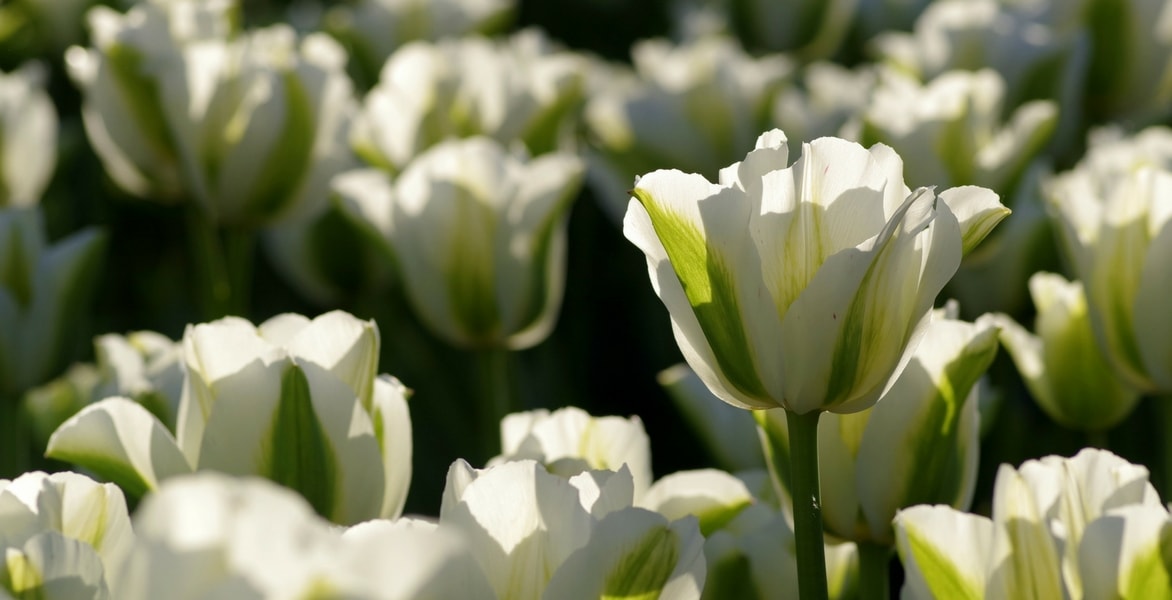
How to care for tulips after flowering to prolong their life?
Extend the lifespan of tulips in the ground
Contents
Tulips are bulbs that delight us with their vibrant and colourful flowering in spring, ideal for brightening up beds, borders, and planters. Easy to grow and low-maintenance, they are planted in autumn to provide elegant flowers between March and May, sometimes until June depending on the varieties. But can tulip bulbs be left in the ground? What is the lifespan of tulips in the ground? And above all, what to do with tulips after flowering? Should we wait? You may also be wondering when to cut faded tulips, why tulips do not bloom, or even do tulips come back every year?
Once the tulip season is over, it is essential to adopt the right practices to preserve the vitality of the bulbs and ensure beautiful flowering the following year. Discover why tulips fall, learn what to do with a faded tulip, and how to extend their life both in the ground and in pots!
Can tulip bulbs be left in the ground?
Yes, you can leave tulip bulbs in the ground, especially in regions with a dry and well-drained climate. However, not all varieties bloom as well from year to year. Botanical tulips are better suited for this.
Today, garden styles have evolved, and tulips are often integrated into mixed borders where they coexist with perennial plants, biennials, other bulbs, and various bushes or climbing plants. This more relaxed and natural arrangement allows for the creation of colour and texture harmonies without the need to replant each year.
Planting tulips in autumn among other perennial plants and leaving them in place for a few years is a practical solution. As long as the flowering is satisfactory, there is no need to dig them up each season.
Why dig up tulip bulbs?
In regions where winters are damp, it may be wise to dig up tulip bulbs after the foliage has yellowed. Store them in a cool, dry place during the summer, then replant them in autumn. This protects the bulbs from rot and encourages their future flowering.
If you choose this method, it is advisable to proceed in dry weather. Gently lift the bulbs, then let them dry for a few days. Next, group them by variety (identifying them to avoid confusion) in nets or crates, and store them all summer in a dry, ventilated place, such as a garden shed or garage.
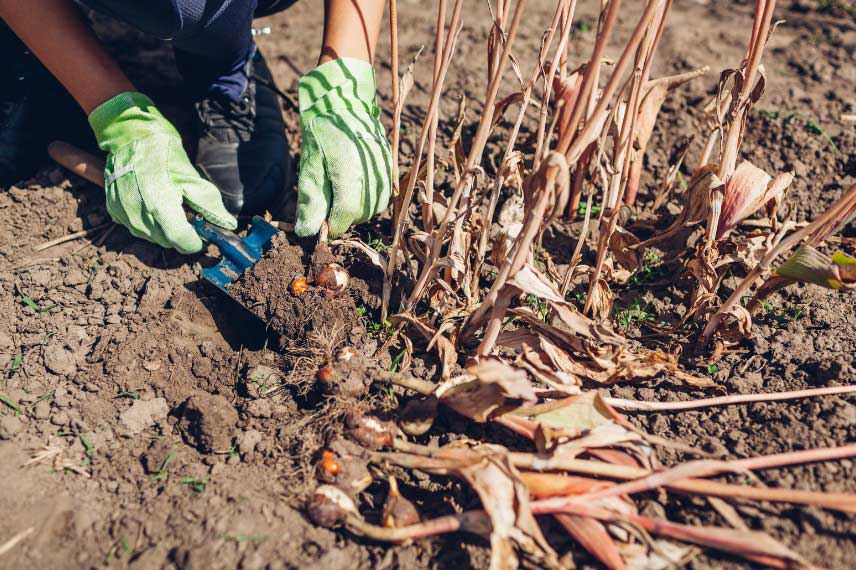
Longevity of tulips in the ground
Keep in mind that the nature of your soil, the climate of your region, and the varieties of tulips chosen also influence the vigour and quality of the blooms! If they are well established and maintained, some varieties can bloom for several consecutive years. However, despite these precautions, the bulbs eventually degenerate after a few years and produce smaller or less abundant flowers. When they start to weaken, you can simply remove the less floriferous bulbs and take the opportunity to rethink the border with new compositions or other varieties of tulips.
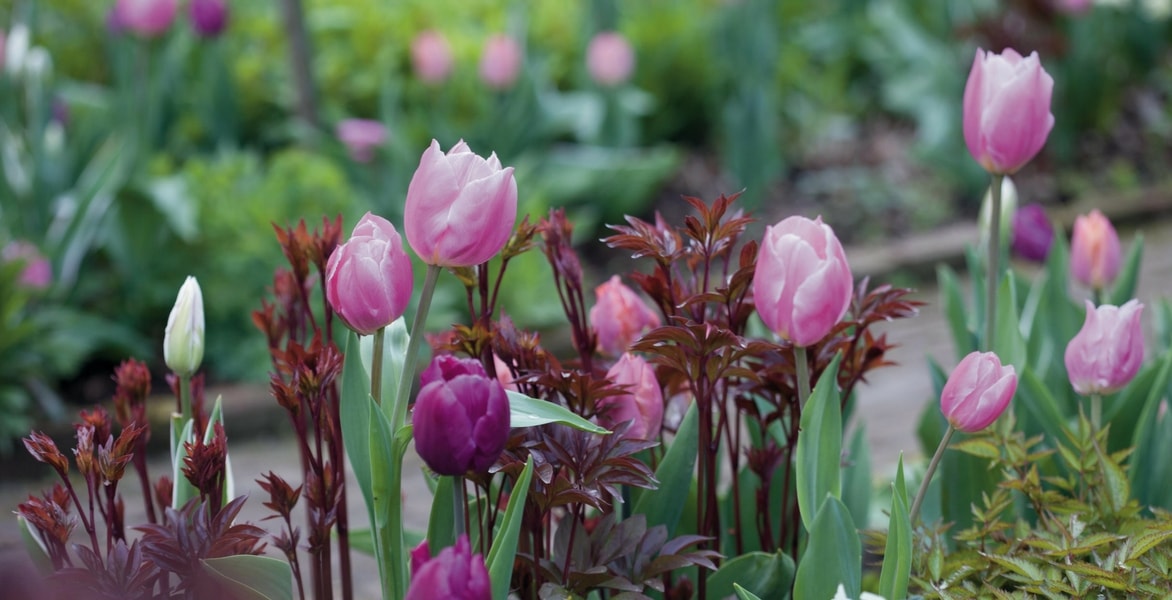
Tulips ‘Purple Prince’ and ‘Christmas Dream‘ combined with Peonies and Astilbes
What to do with tulips after flowering?
To encourage your tulips to bloom again, a few precautions are necessary when the tulip season comes to an end, right after their first spring flowering.
When to cut faded tulips?
Once the tulip flowers start to fade, carefully cut them to prevent the plant from wasting its energy producing seeds. However, do not touch the leaves just yet! Leave the foliage in place until it has yellowed and dried naturally. This step is crucial: green leaves, even after flowering, continue to perform photosynthesis. They provide the bulb with the necessary nutrients to replenish its reserves, allowing for the following year’s flowering. By cutting the leaves too early, you deprive the bulb of this precious energy and risk making it unable to bloom again.
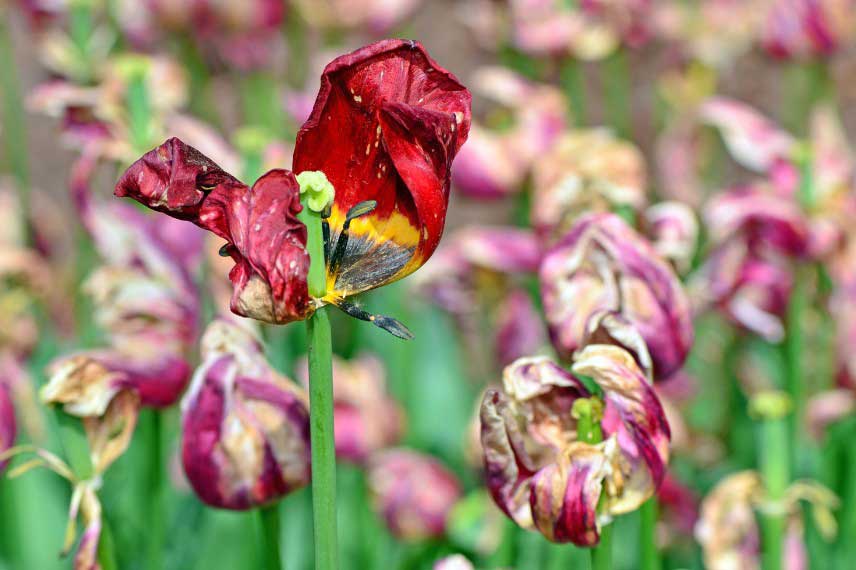
What to do with faded tulips?
The yellowing leaves may not be very aesthetically pleasing in your beds. To mask this temporary appearance, plant your tulips near perennials with dense foliage, such as hardy geraniums, hostas, or lady’s mantle. These neighbouring plants will help conceal the declining foliage while adding volume and greenery to your borders.
Once the leaves are completely yellow and dry, you can cut them at the base. At this stage, the bulb has absorbed all the energy it needs to prepare for the next flowering.
Discover other Tulips
View all →Available in 1 sizes
Available in 1 sizes
Available in 0 sizes
Available in 0 sizes
Available in 0 sizes
Available in 1 sizes
Available in 1 sizes
Available in 0 sizes
Available in 0 sizes
Properly planting tulip bulbs: the key to a long flowering
If you decide to leave your tulip bulbs in place in your beds to simplify maintenance and save time, it is essential to provide them with ideal planting conditions. By taking a few precautions from the start, you maximise your chances of seeing your tulips bloom elegantly for several years.
It is also the quality of the planting that determines the lifespan of a tulip bulb. For this, two essential conditions must be met: plenty of light and well-drained soil. Without these two elements, tulips are likely to perish quickly, as they are particularly sensitive to shade and damp soils.
Choose a fully sunny location to plant your tulips, as they need maximum exposure to light to recharge their bulbs and produce abundant flowering the following spring. A lack of light will reduce their ability to bloom again or limit the quality of the flowers.
Next, carefully prepare the soil, as tulips prefer fertile, well-drained soils. If your soil is rather poor, improve it by incorporating some well-decomposed compost into each planting hole. This will provide the bulbs with the nutrients they need to thrive sustainably. In heavy or clay soils, add a layer of coarse sand 2 to 4 cm deep at the bottom of each hole to promote drainage and insulate the bulbs from excessive moisture, which could cause them to rot.
Finally, if your soil is very clayey and drainage remains an issue, it may be better to choose other bulbs that are better suited to damp soils, such as daffodils, which tolerate these conditions better and also offer a magnificent spring flowering.
By taking care of the planting in this way, you ensure a bright future for your tulips, with vibrant blooms returning each spring!
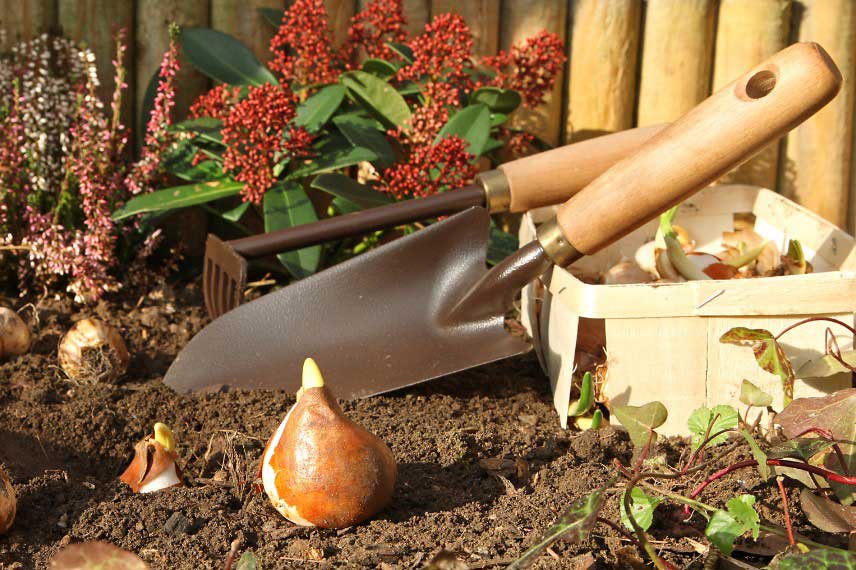
And potted tulips?
If you have planted tulips in pots or containers to enjoy a spring flowering, it is quite possible to keep them for future flowering rather than discarding them once the flowers have faded. A few simple steps will allow you to extend their life.
One option is to transfer your tulips to the ground as soon as the flowering has finished. To do this, carefully uproot them to preserve the roots and, above all, leave the foliage intact. This foliage, although not very attractive, is essential as it allows the bulb to replenish its nutrient reserves until it naturally yellows. Plant the bulbs in a sunny, well-drained spot so they can continue their development undisturbed.
Another possibility is to leave your potted tulip bulbs until the foliage has completely yellowed. During this time, continue to water them regularly and provide a balanced fertiliser every two to three weeks. This will stimulate photosynthesis and help the bulbs accumulate the energy needed to flower again the following year. Once the foliage has turned yellow and dry, cut it back to the base, dig up the bulbs, and let them dry in a cool, dry place for the summer, just as you would with tulips in the ground.
In autumn, replant them in fresh potting soil or directly in the garden for another flowering. This method can yield two to three quality flowerings, but it is rare for a potted tulip to flower as vigorously beyond this duration.
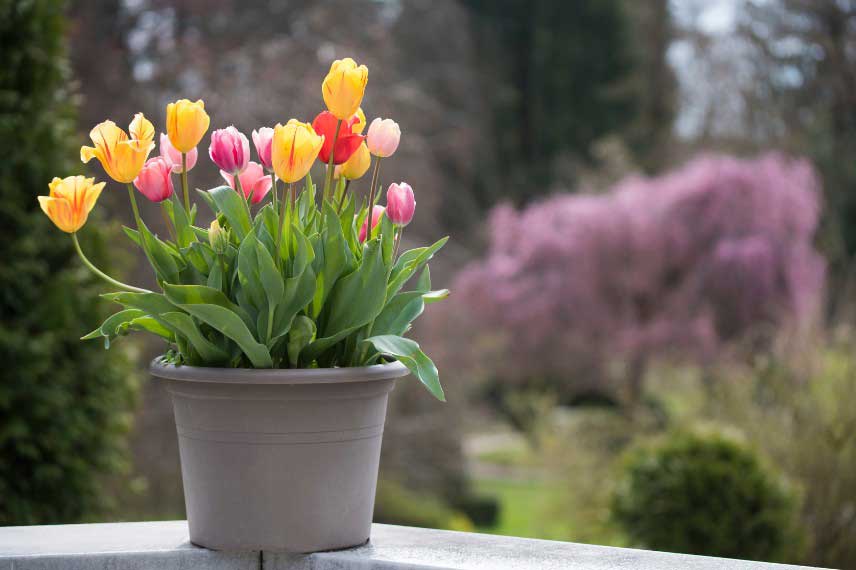
Botanical tulips: tulips that regrow every year!
Champions of tulip longevity in the ground: the botanical tulips! These small tulips, more discreet than large horticultural tulips, bring a touch of lightness and charm to the foreground of flower beds, along pathways or terraces, in rockeries, and even in wild gardens. They reliably bloom every year and can even naturalise and multiply over time when growing conditions are favourable.
They thrive in sunny situations, in well-drained soil, and even tolerate slightly poor soils, making them perfect for many types of gardens.
For a successful visual effect, plant them in small groups of at least 5 to 7 tulip bulbs in autumn. This arrangement will highlight their delicate beauty and prevent their flowers from getting lost in the surroundings. Once established, these charming tulips will provide you with long-lasting and effortless blooms, year after year!
Frequently asked questions
-
Do tulips come back every year?
It depends! Some varieties of tulips, especially the botanical ones, come back every year. Others need to be replanted or require care for the bulbs. -
Why do tulips droop?
Lack of sunlight and weak bulbs are the most common causes. To prevent tulips from falling, they should first be planted in a well-lit location, as light strengthens the stems (if the area is too shaded, they stretch too much in search of light, making the stems more fragile). It is also important to choose varieties known for their sturdiness. Moderate watering is recommended, as excess water weakens the plants. Finally, if necessary, light staking or planting in groups helps to keep them upright. -
Why aren't my tulips flowering?
If the leaves are cut too early, the bulb does not store its reserves and may not flower again the following year. A lack of sunlight or overly moist soil can also jeopardise flowering the next year.
- Subscribe!
- Contents
































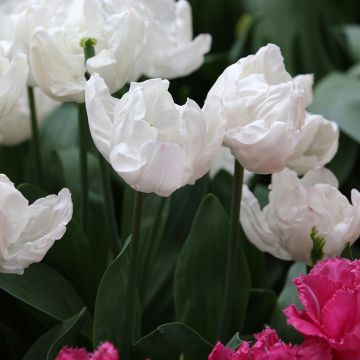
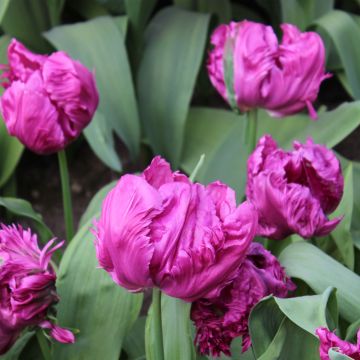

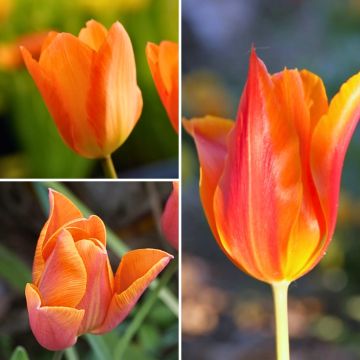
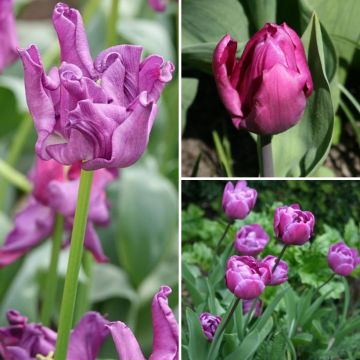
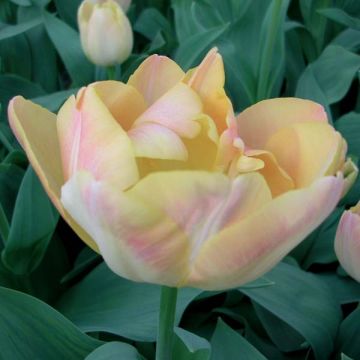
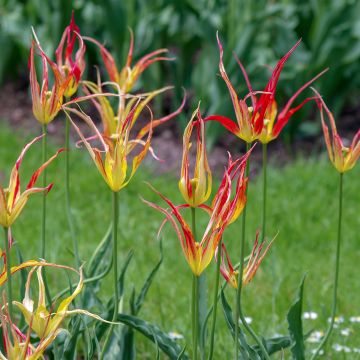


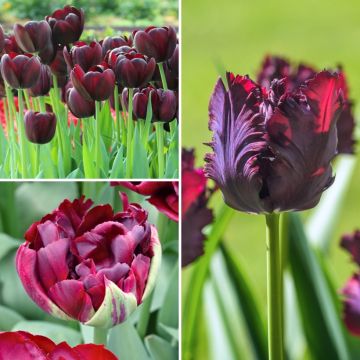
Comments